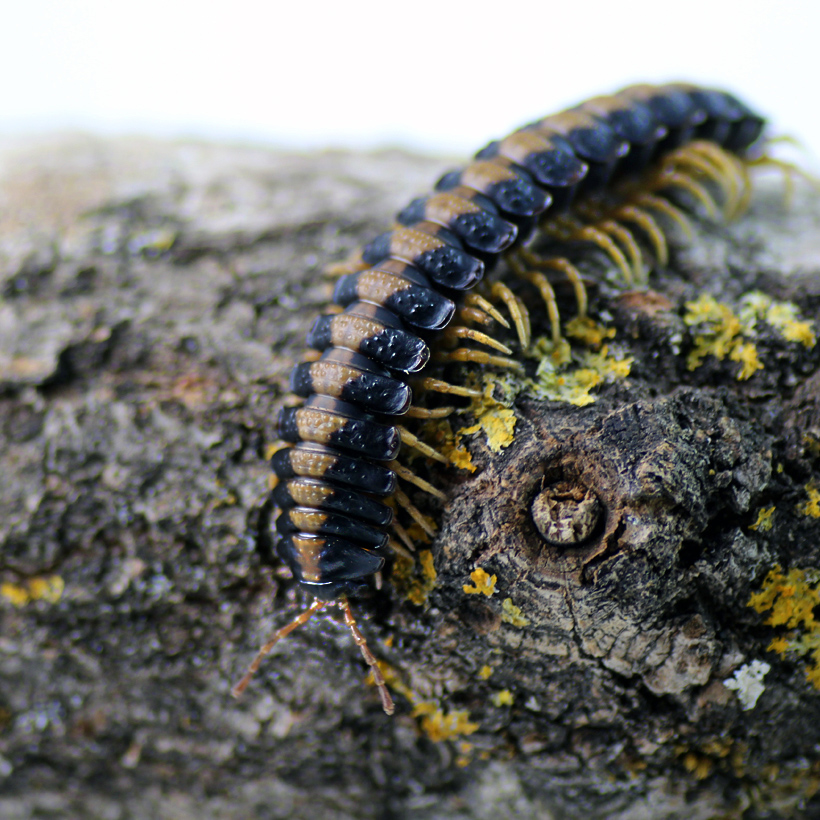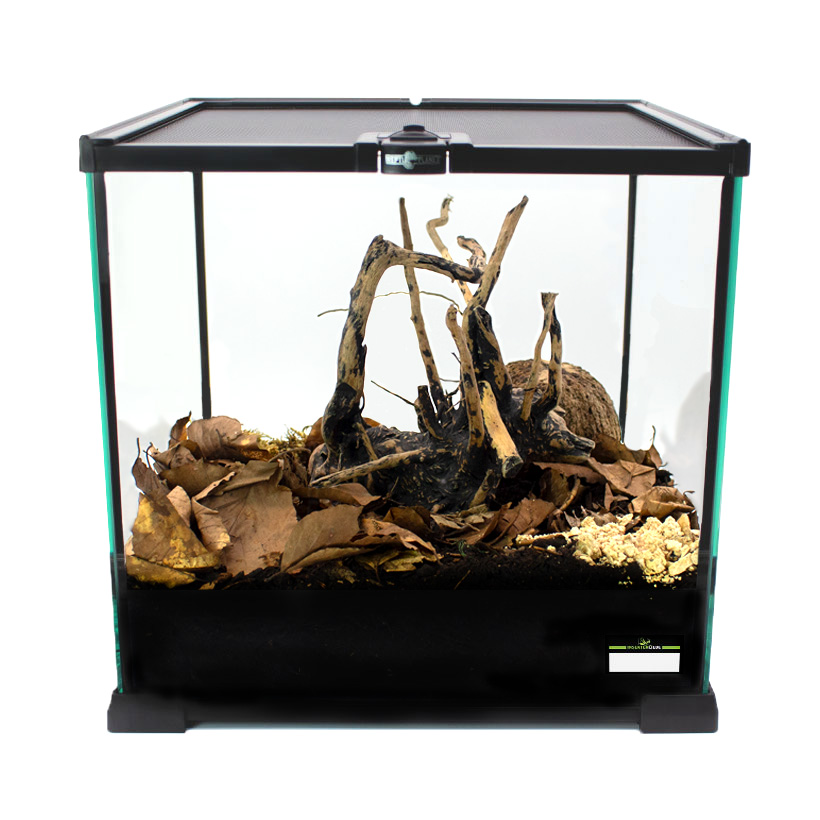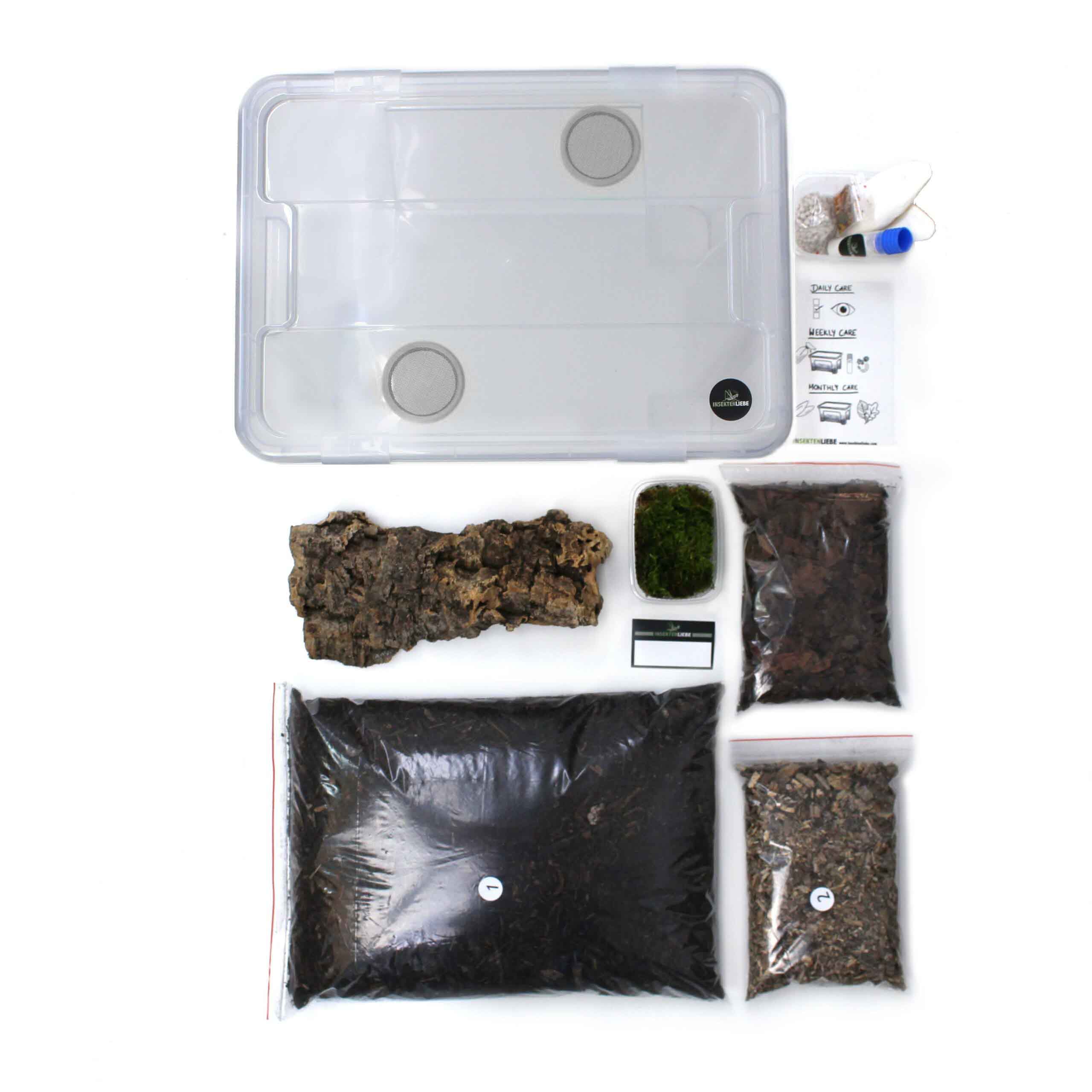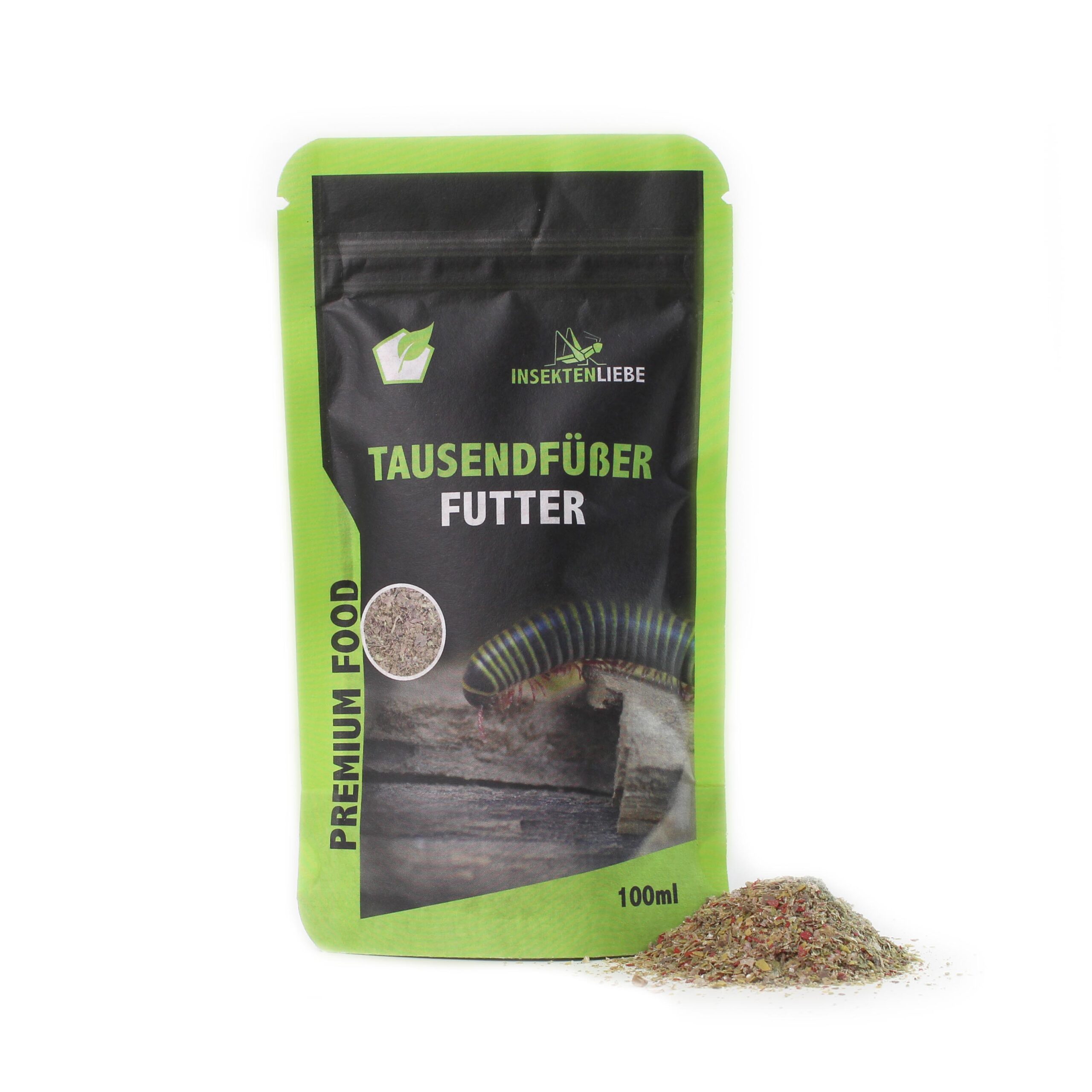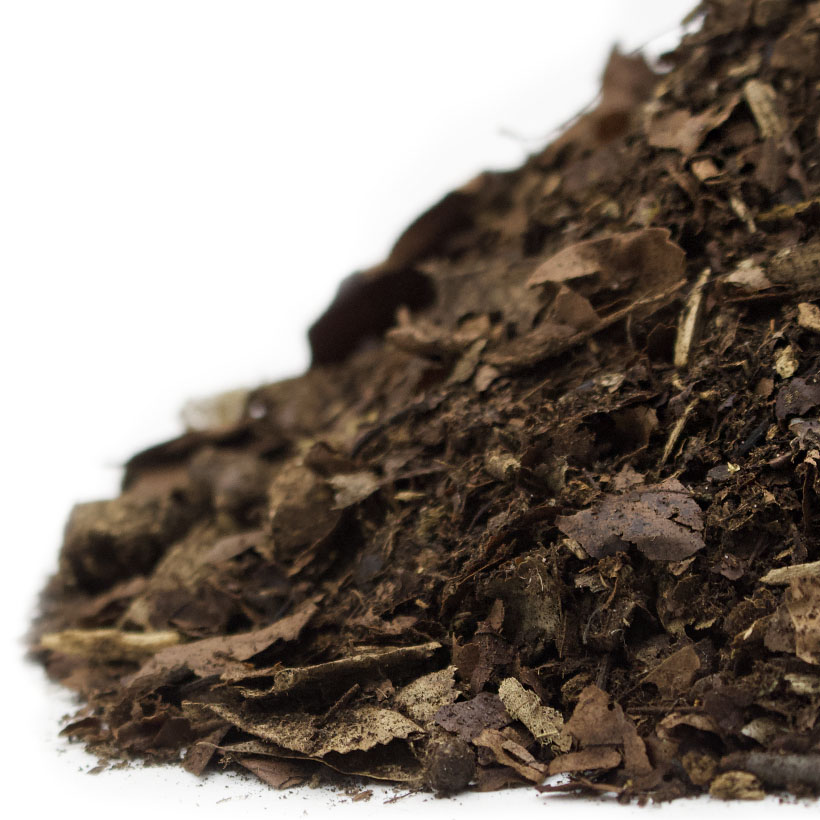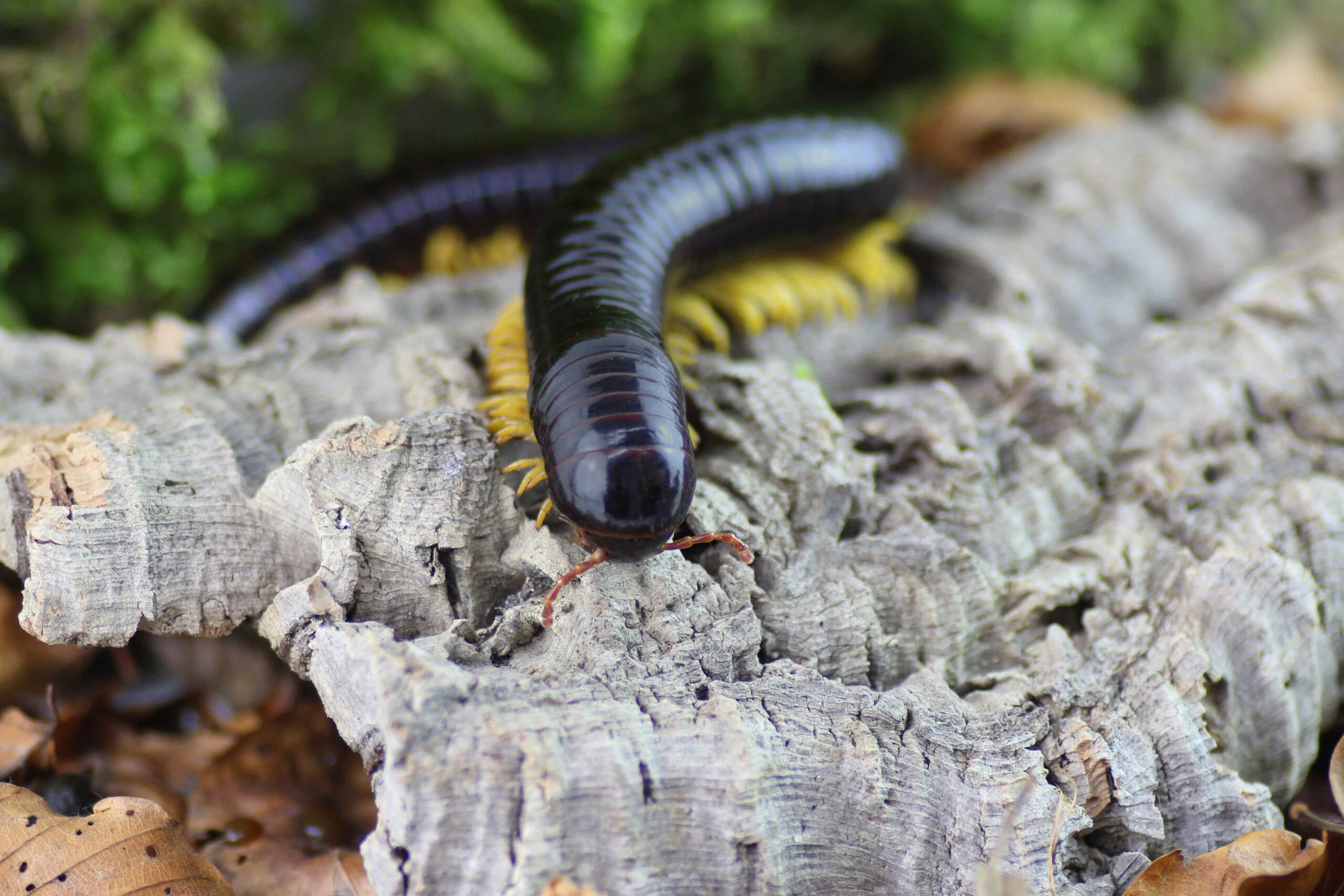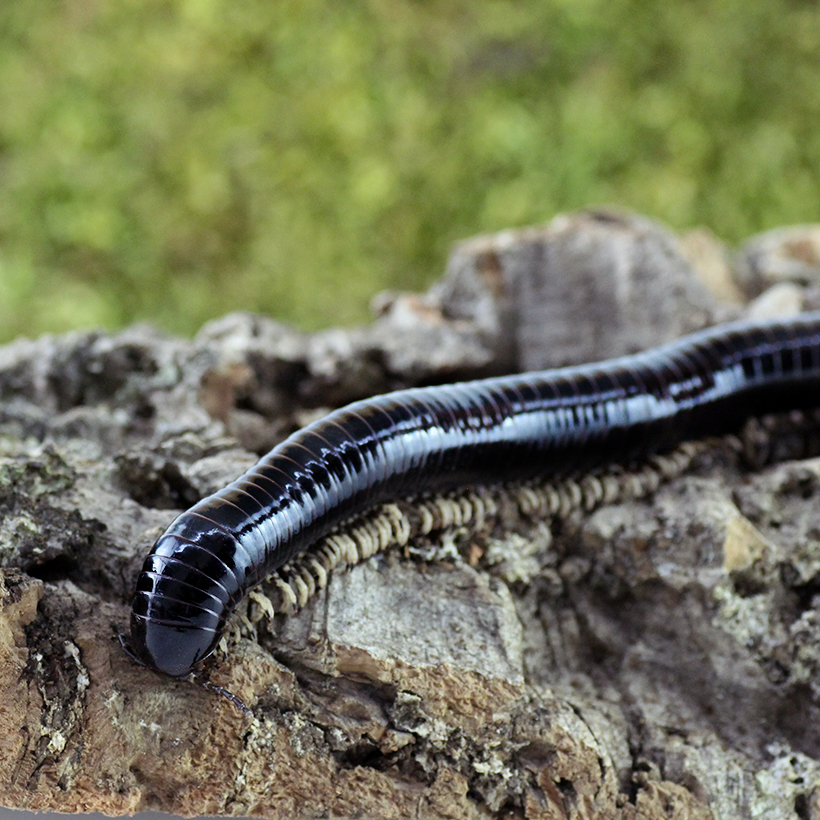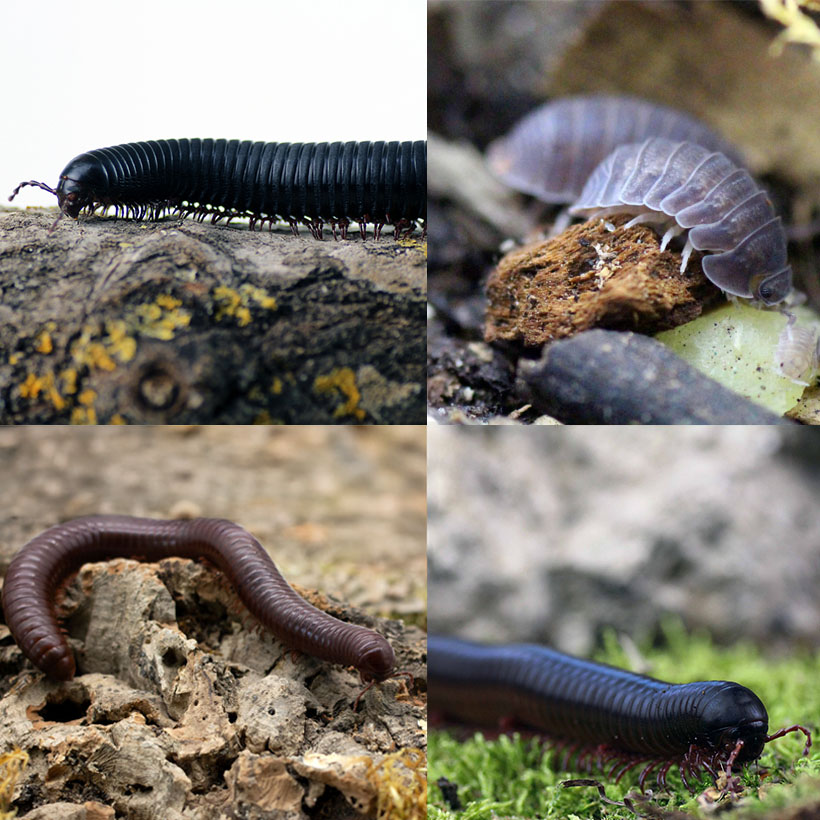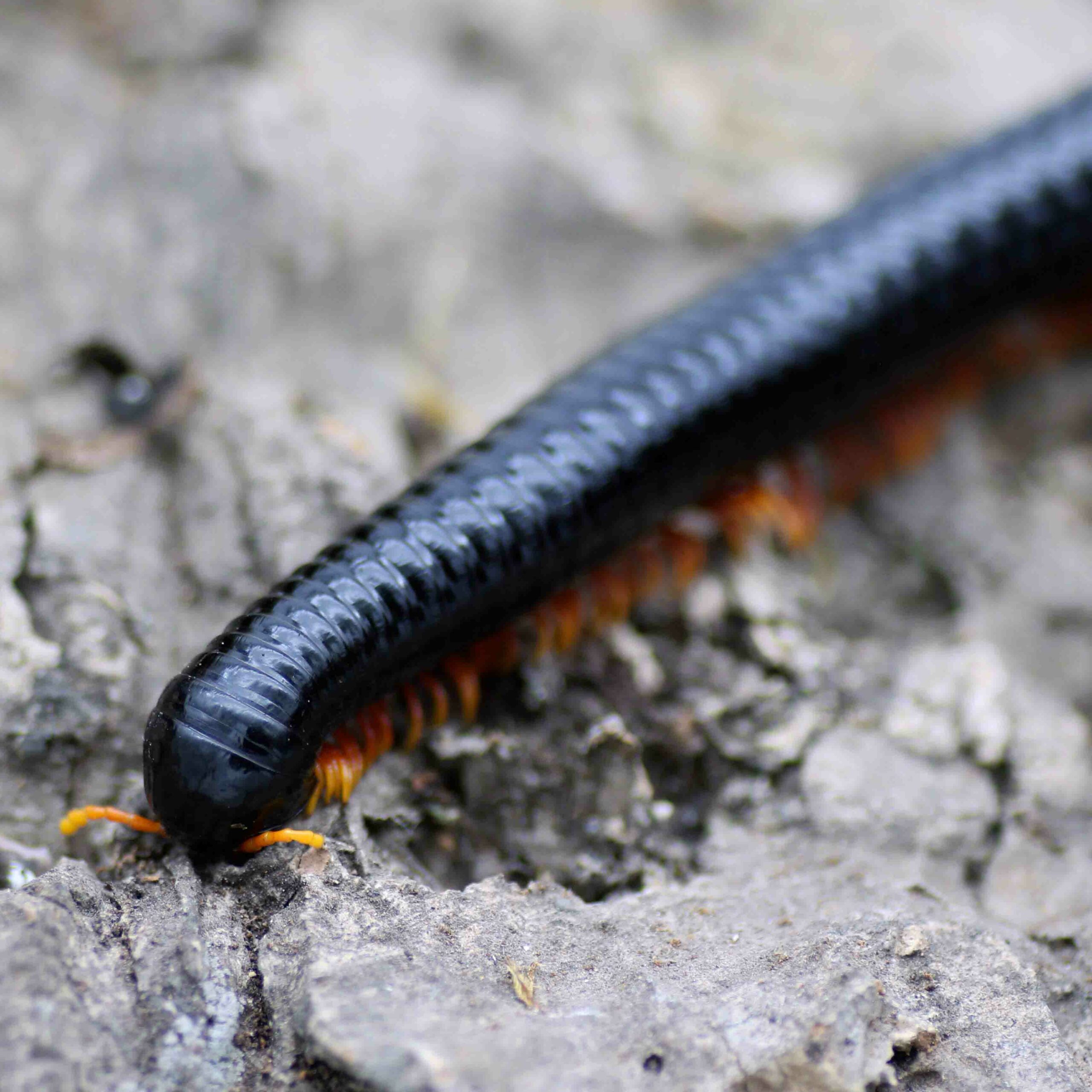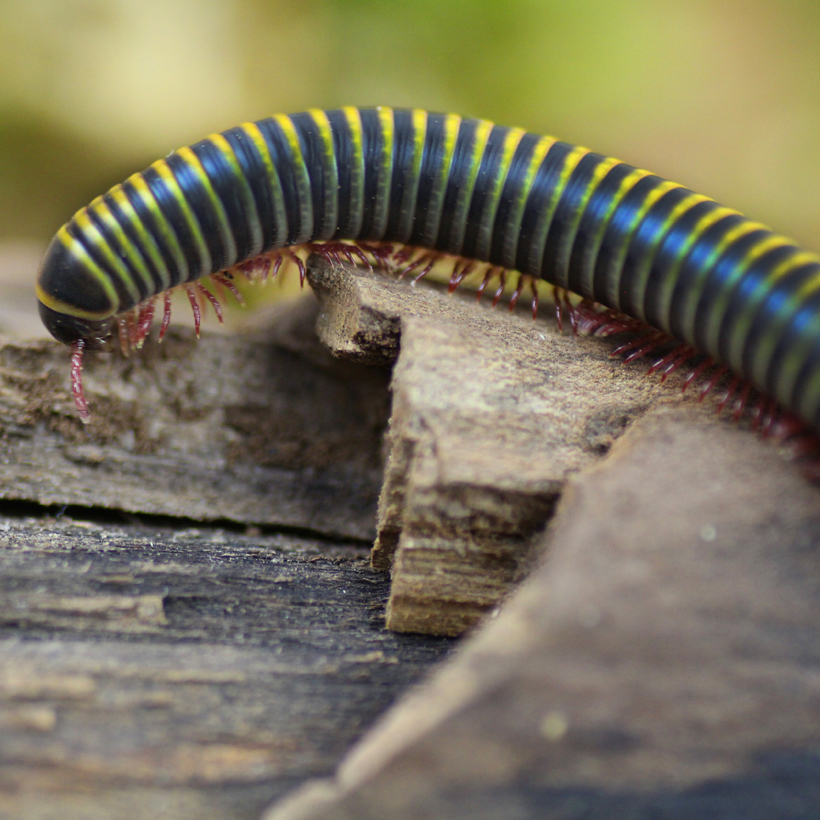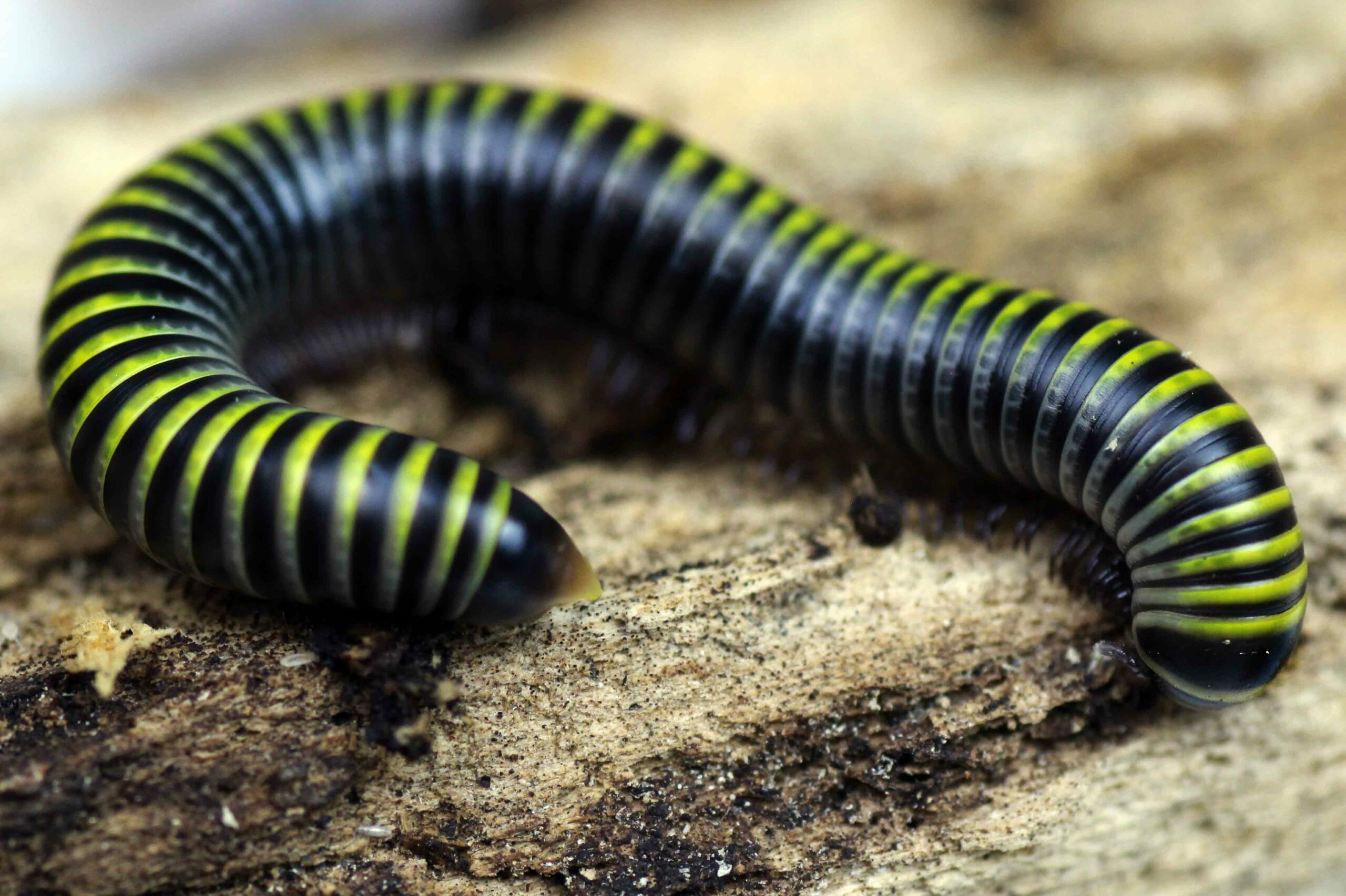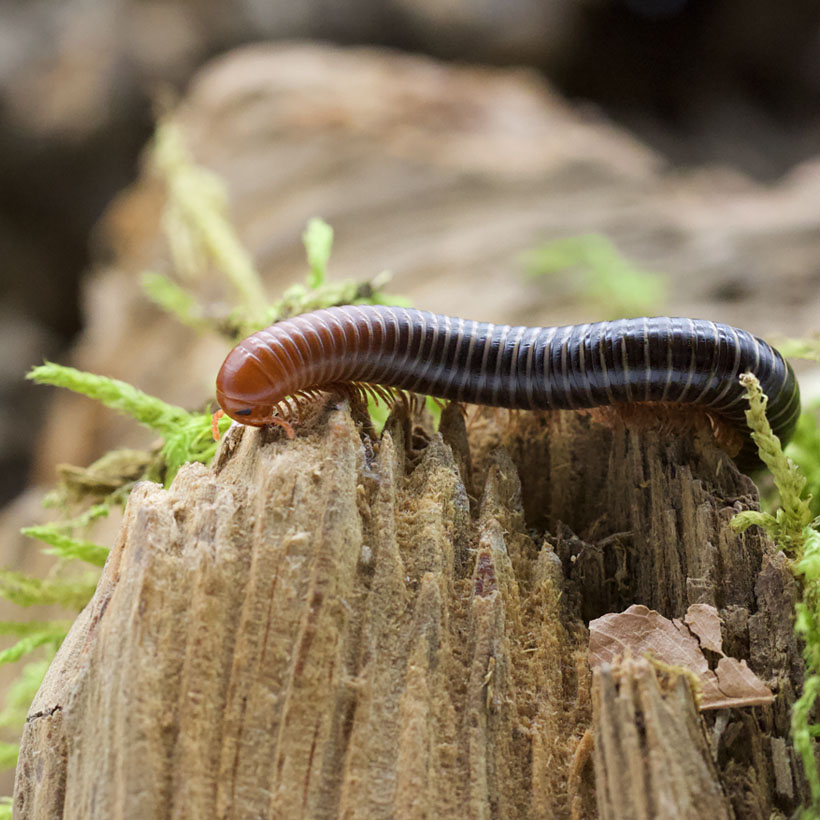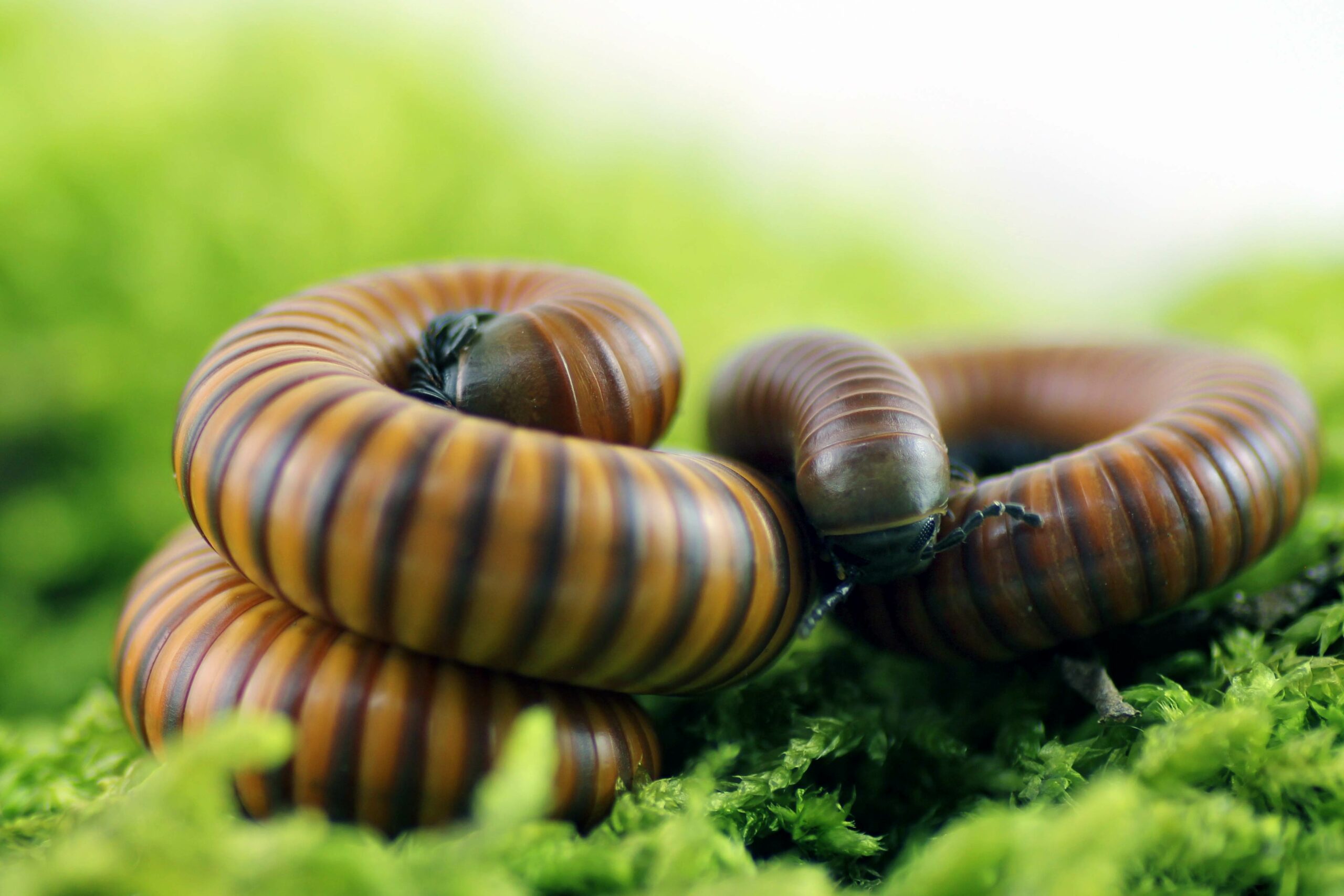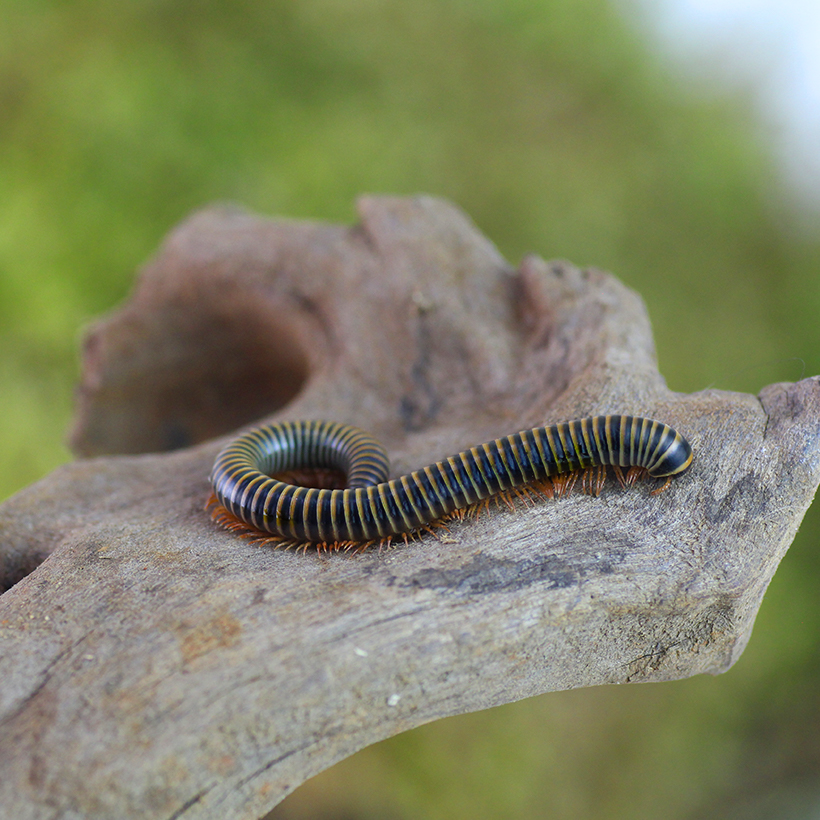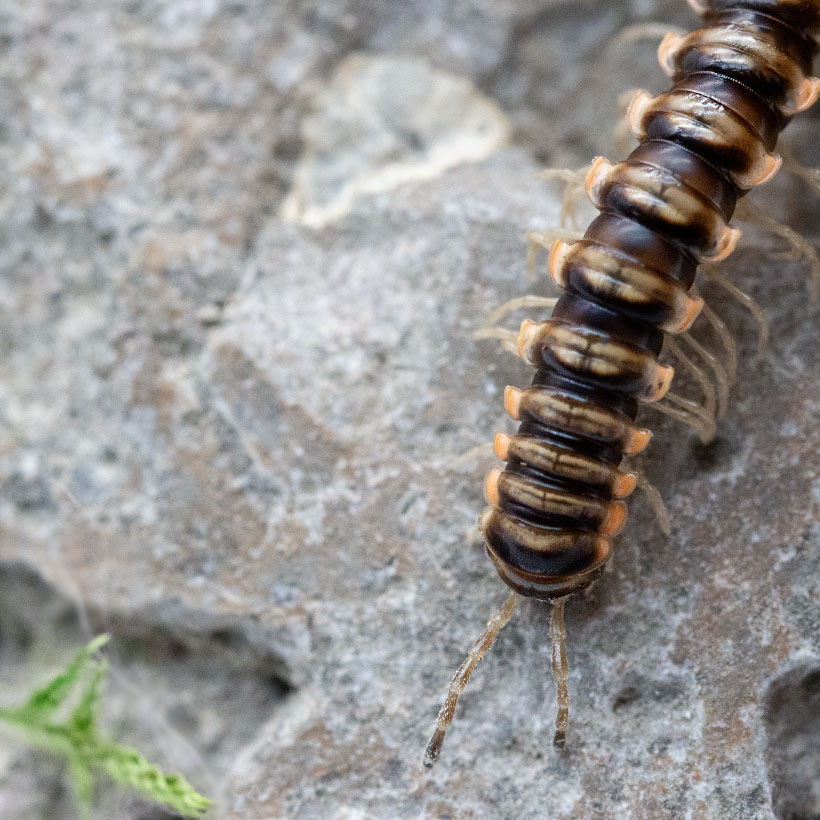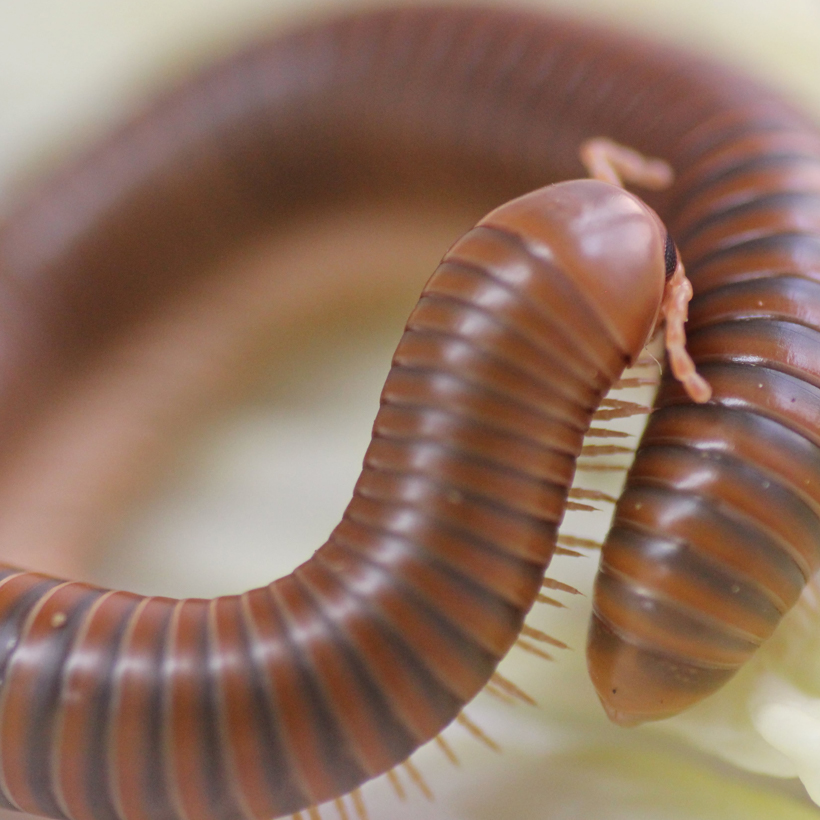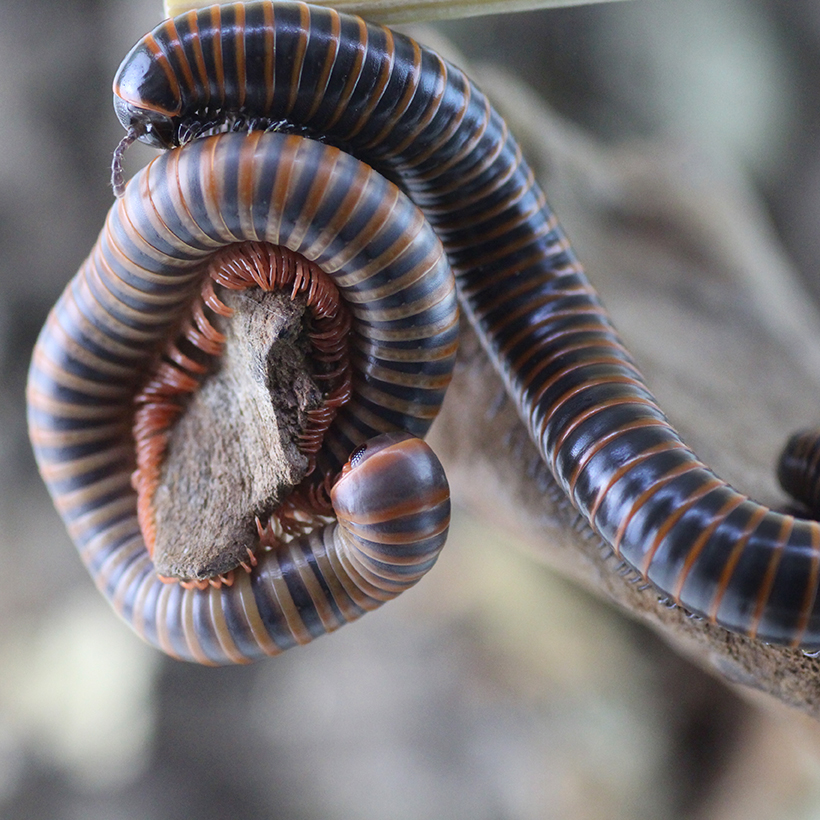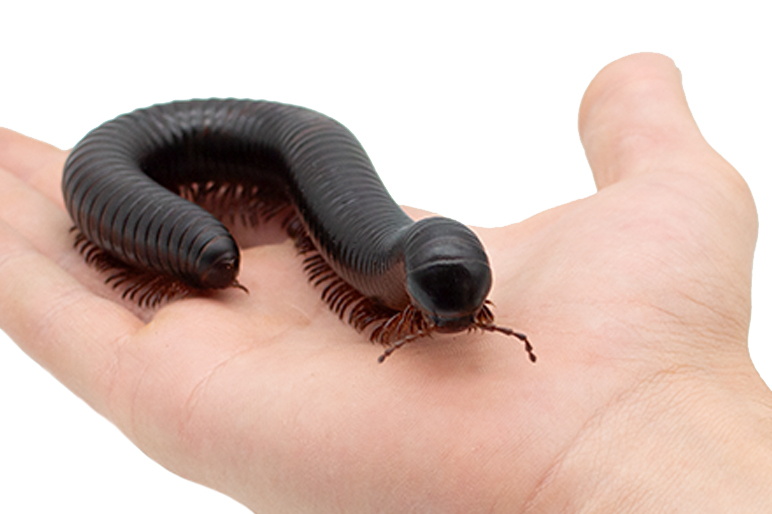Your cart is currently empty!
Coromus vittatus vittatus
Out of stock
Medium
Nigeria
< 100 mm
21°C – 26°C
Brief description:
Coromus vittatus vittatus is a fairly large species of banded pinniped, measuring up to 10 cm in length. It can be found in almost all of Africa. It is mainly found in Cameroon, Nigeria and Liberia. There it lives in warm, humid forests. Coromus vittatus vittatus is a relatively well-known species of band-footed fish and is often offered in the trade. Keeping Polydesmida is very easy. Only breeding is a challenge. Breeding has only rarely been successful and when it has, it has been with high failure rates.
The body of Coromus vittatus vittatus is dark brown in color. As is usual with banded pinnipeds, it is flattened and divided into clearly visible limbs. The legs and antennae of this species are reddish-brown in color. A conspicuous yellow stripe runs across the back.
Due to the relatively small adult size of this species, it can be kept in terrariums with an edge length of 30 cm or more. However, care should be taken to ensure that there is enough space for a sufficiently high substrate. The substrate height for this species should not be less than 8 cm! The substrate serves as both habitat and food for the animals and is regularly visited for moulting.
Daytime temperatures of 21-26°C have proven to be suitable for keeping this species. The animals are mainly crepuscular and nocturnal, which is why you can do without an additional light source. When reaching the temperatures in the terrarium, it is important to always place the heat source from above and never from below! The substrate should always be kept semi-moist. A humidity of 70-100% comes closest to the conditions of their natural habitat. The substrate can also be covered with leaves, pieces of bark or moss. This helps to protect it from drying out. All types of tapeworms prefer forest terrariums. Climbing branches are popular with this species and adults in particular can often be seen on the surface. A high proportion of white rotten wood in the terrarium is important for this species, as it prefers to eat this. In addition, the leaves contained in the substrate and occasionally vegetables, fruit or millipede food are also accepted as supplementary food.
